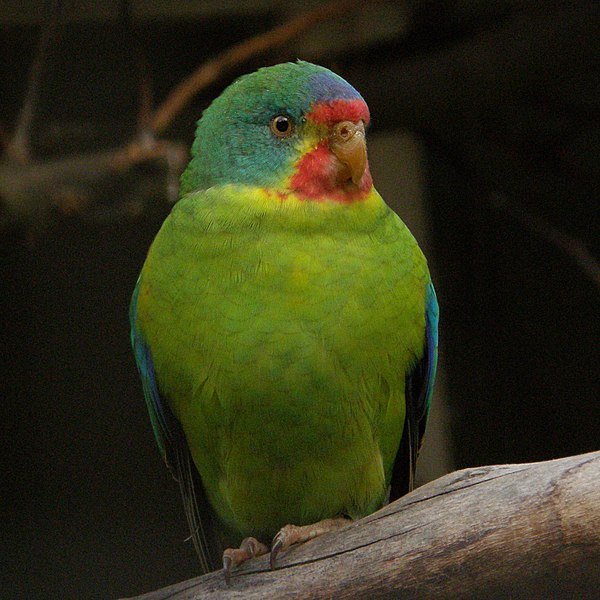 Right now, as autumn progresses in the north and spring arrives in the south, billions of birds embark on epic migrations that take them to breeding and wintering grounds. The journeys of many species, such as the pole-to-pole trip of the Arctic Tern, are well-known to bird enthusiasts. We don’t often think of parrots as migrants, yet many do undertake very impressive seasonal trips. Today I’ll highlight 2 little-known migratory rarities, the Swift Parrot (Lathamus discolor) and the Orange-Bellied Grass Parakeet (Neophema chrysogaster).
Right now, as autumn progresses in the north and spring arrives in the south, billions of birds embark on epic migrations that take them to breeding and wintering grounds. The journeys of many species, such as the pole-to-pole trip of the Arctic Tern, are well-known to bird enthusiasts. We don’t often think of parrots as migrants, yet many do undertake very impressive seasonal trips. Today I’ll highlight 2 little-known migratory rarities, the Swift Parrot (Lathamus discolor) and the Orange-Bellied Grass Parakeet (Neophema chrysogaster).
Perilous Travels
The journeys of Australia’s only migratory parrots do not approach in length those of many other birds, but they are fraught with danger for other reasons. Both species are rare, and rely upon disappearing habitats and very unique foods; like all migrants, protection is needed at both their Australian winter and Tasmanian summer ranges, and along their migration routes.
The Swift Parrot
Sporting a bright red tail and a neon-green body, the 9-inch-long Swift Parrot breeds in Tasmania. The tree hollows it requires are a rare resource for which larger birds also compete. Furthermore, the Swift parrot must find hollows that are within daily flying distance of its primary food – the blossoms of the Tasmanian Blue Gum Tree and the insects associated with them. To complicate matters, this tree blooms sporadically and in different locations, rather than all at once as do most others. In some years the parrots must travel far and wide in search of food…this places them at risk of predation and starvation, and reduces nesting success.
The Swift Parrot faces similar difficulties on its wintering grounds in Australia. After migrating across the Bass Strait to escape Tasmania’s frigid cold, it must locate stands of flowering Swamp Mahogany, Spotted Gum and related trees, all of which also bloom at different times. Its primary winter home lies in Victoria and southern New South Wales, but food shortages often force it north into Queensland.
The Orange-Bellied Grass Parakeet
The Orange-Bellied Grass Parakeet’s total population is estimated to hover between 50-180 individuals, making it one of the world’s scarcest birds…some ornithologists believe that it will be extinct in the wild within 5 years. Also known as the Orange-Bellied Parrot, it shares many of the threats facing the Swift Parrot. It too migrates from Australia to Tasmania to breed, then crosses the Bass Strait back to Australia as winter arrives. Its breeding range is limited to a single patch of woodland in southwest Tasmania.
In common with the Swift Parrot, the Orange-Bellied Grass Parakeet also relies upon a scarce habitat and specialized food source while in South Australia, where it spends the winters. Oddly for a parrot, it favors salt marshes, lagoons and estuaries – coastline habitats that are themselves threatened by development. Its preferred foods, the seeds, fruits and stems of salt marsh plants, are to be found only within these fragile environments. Introduced Red Foxes, Domestic Cats and European Starlings place additional pressures on over-wintering birds.
Further Reading
Ecology and Conservation of the Orange Bellied Parrot.
Swift Parrot image referenced from wikipedia and originally posted by Frank Wouters and Snowmanradio
 That Bird Blog – Bird Care and History for Pet Birds
That Bird Blog – Bird Care and History for Pet Birds



